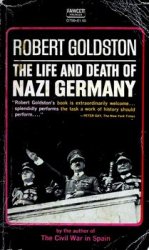The loss of Christian Jerusalem to Saladin (1187) and even more so, the capture of Acre (mod. ‘Akko, Israel) by the Mamluks (1291) brought forth numerous projects intended to bring about the recovery of the Holy Land. These projects eventually gave rise to a new genre of crusade literature, namely memoranda or treatises “concerning the recovery of the Holy Land” (Lat. de recuperatione Terrae Sanctae).
Planning, often lasting years, had long been an essential preparation for crusades. However, it was only on the eve of the Second Council of Lyons (1274) that written plans or proposals appeared for the first time. This new development was a result of the bull of summons to the council, Salvator noster (31 March 1272), in which Pope Gregory X asked for suggestions as to how to keep the Holy Land once it was regained and restored. Some of the copies of the bull also contained a request for written advice concerning the planned crusade. The memoirs submitted to the council dealt little with the strategy of a crusade, but mainly with subjects such as its ideology, preaching, and financing. Those who did provide some advice on strategy, Humbert of Romans and Gilbert of Tournai, both supported the idea of small successive expeditions to the Holy Land, or “perpetual crusade” (Lat. passagium particulare), and opposed the traditional strategy of a large, general expedition (Lat. passagium generale). On the whole, crusade planning in this initial stage reflects a new strategy, whose main features were the creation of a permanent garrison in Outremer and the launching of small manageable expeditions, manned by professional soldiers, which would periodically succeed each other in the East.
Though the strategy advocated at the Second Council of Lyons marks the beginnings of a new period in crusade planning, it lacked some features that became popular after 1291. For example, the council made very little of European sea power as an important factor in any war against Islam. Gregory X was informed by experts such as William of Beaujeu, master of the Temple, and Humbert of Romans (and possibly Fidenzio of Padua) of the weakness of the Mamluk sultanate at sea, but he envisaged a fleet of only 20 ships to be used solely for the crusade. It was therefore only after the fall of Acre, the last Christian possession in Palestine (1291), that the idea of an economic blockade of the Mamluk ports was coupled with that of a special maritime police and of a passagium particulare. Also conspicuously absent from the crusade planning of Lyons II was the plan of the conquest of Egypt as the key to the reconquest of the Holy Land, even though this route had been pursued by crusades in the past. A written statement of this strategy appeared on the eve of the fall of Acre in La Devise des chemins de Babiloine, a military memoir addressed to the West by the Order of the Hospital (1289/1291).
One of the unintended results of the loss of the Holy Land in 1291 and the vigorous crusade policy of Pope Nicholas VI (1288-1292) was the inauguration of a new epoch in crusade literature. His request for advice (in the absence of a general council) stimulated the creation of a new branch of literature, the de recuperatione Terrae Sanctae memoranda. This new genre had much in common with previous crusade treatises such as those of Humbert of Romans or Gilbert of Tour-nai. Yet there is a meaningful difference between them. The early treatises may be described as working papers submitted for conciliar discussions and therefore mainly concerned with such topics as the ideology, preaching, and organization of the crusade. The memoranda composed after 1291 were practical guidelines, and, as such, were largely concerned with general strategy as well as with detailed plans to be followed. They reflect a new attitude to the crusade. As their authors were usually familiar with the strategy of war, the memoirs tended to transform the crusade into a minutely planned expedition.
The authors of the de recuperatione treatises can be divided into two major groups. The first consisted of people who had spent some time in the Levant and thus were recognized as experts: they included Fidenzio of Padua, Charles II of Anjou, Marino Sanudo Torsello, Philippe de Mezieres, Emmanuel Piloti, Bertrandon de la Broquiere, Giovanni
Dominelli, and various masters of the military orders. Their treatises are characterized by their secular, highly professional, and practical strategic concepts of the crusade. The second group consisted of Europeans less acquainted with the Levant, who were often (but not always) sincerely interested in the promotion of a crusade, and were often writing at the request of a pope or a monarch. They included Ramon Llull, Pierre Dubois, William of Nogaret, Galvano of Levanto, William Durant, and William le Maire. Their treatises are more theoretical and pay more attention to the financial and European aspects of the crusade. As most of the authors in this group were churchmen, they gave special attention to the religious and sometimes missionary issues.
Three crusade plans written during the pontificate of Nicholas IV inaugurated the new trend in crusade planning and expressed the main features of crusade planning after 1291. Composed by the Franciscan Fidenzio of Padua, Ramon Llull, and Charles II of Anjou, king of Naples, they envisaged that Jerusalem would be won on the battlefields of Egypt, and thus returned to the thirteenth-century tradition. Whether they favored land or sea routes, none suggested a direct attack on the Holy Land, but proposed the establishment of bases from which a final attack should be launched after a blockade of Egypt. It was Christendom’s naval power and its supremacy on the seas that would assure this victory.
Pope Clement V (1305-1314) announced his intention to organize a crusade in the encyclical that proclaimed his coronation. This announcement produced a number of treatises during his pontificate. With the exception of that of James of Molay, master of the Temple, they all focused on a maritime blockade of Egypt. The most influential was one formulated in the East (between September 1306 and summer 1307), possibly by Fulk of Villaret, master of the Hospital. It provided the plan of action for a papal-Hospitaller passagium particulare. Proclaimed on 12 August 1308, this passagium was seen by Clement V as intended to prepare, over a period of five years, the way for a general crusade by defending Cyprus and Cilicia and by preventing illegal commerce with the Muslims through a maritime blockade of Egypt. The expedition, consisting of 1,000 knights, 4,000 foot soldiers, and 40 galleys, was to depart on 24 June 1309. However, the project was only partly realized due to a lack of ships and funds. When it departed in the spring of 1310 it consisted only of some 26 galleys, 200-300 knights, and 3,000 foot soldiers. It assisted local Hospitallers in completing the conquest of Rhodes (mod. Rodos, Greece) and some of the adjacent islands, but failed to achieve its main aim: to stop illegal trade with the Mamluk sultanate by means of a maritime blockade; its effect, therefore, on the military and economic standing of the Mamluks was negligible. Another crusade that seems to have been organized according to a written plan was that of King Peter I of Cyprus, which culminated in the temporary capture of Alexandria (1365).
By 1336 the common features of crusade planning were the establishment of a general peace in Europe, the reform or unification of the military orders, an alliance with the Mongols, and the blockade of Egypt by forces of a passag-ium particulere as a necessary prologue to what was to become the grand finale—the general crusade. The years 1290-1336 were the golden age of the literary genre of the de recuperatione Terrae Sanctae. Its decline thereafter can be explained mainly as a result of the Hundred Years’ War. However, new ideas still appeared. The contribution of Philippe de Mezieres to crusade planning in his Songe du vieil Pelerin (1389) was the conception of a new order of chivalry that should supersede all others and if possible incorporate them. In his opinion, the older orders had failed to accomplish their chief aim, the recovery of the Holy Land. In order to eliminate their vices, a new order was to be founded. It was to be an example of perfection, so that all might purify their actions from vices and shape their lives on its model. The new order was intended not only for the recovery of the Holy Land, but also its retention in Christian hands. It had to include all the knights and men-at-arms of Christendom in one large and holy fellowship. It was intended first of all to purify the West from all the evils that prevailed in it. This having been achieved, the new body would proceed to a preparatory campaign, which corresponds to the passagium parvum or passagium particulare suggested by other crusade planners. Then the passagium generale would follow, under the leadership of the kings of England and France, with every assurance of success in the conquest of the Holy Land.
The disastrous Crusade of Nikopolis (1396) marked the end of the crusades as an organized movement of Christendom against Islam for the deliverance of the Holy Land. In the tumult of new movements and a modern age, by the end of the fifteenth century the crusade for the salvation of the Holy Land sank into oblivion. Now and again projects to revive the holy war against the Ottoman Turks did emerge.
In 1515 Pope Leo X, King Francis I of France, and Emperor Maximilian I discussed a crusade, and Francis expressed his wish to lead a campaign for the reconquest of the Holy Land. Yet during the sixteenth century Western Christendom was so completely absorbed in the Reformation that the issue of the crusade was largely abandoned.
-Sylvia Schein
Bibliography
Atiya, Aziz S., The Crusade in the Later Middle Ages (London: Methuen, 1938).
Delaville le Roulx, Joseph, La France en Orient au XlVe siecle: Expeditions du marechal Boucicant (Paris: Thorin, 1886).
Housley, Norman, The Avignon Papacy and the Crusades, 1305-1378 (Oxford: Oxford University Press, 1986).
-, The Later Crusades: From Lyons to Alcazar (Oxford:
Oxford University Press, 1992).
Jorga, N., Philippe de Mezieres, 1327-1405, et la croisade au XlVe siecle (Paris: Bouillon, 1896).
-, “Un projet relatif a la conquete de Jerusalem, 1609,”
Revue de l’Orient latin 2 (1894), 183-189.
Kedar, Benjamin Z., and Sylvia Schein, “Un projet de “passage particulier” propose par l’ordre de l’Hopital 1306-1307,” Bibliotheque de l’Ecole des Chartes 137 (1979), 211-226.
Leopold, Antony, “Crusading Proposals in the Fourteenth and Fifteenth Centuries,” in The Holy Land, Holy Lands, and Christian History, ed. R. N. Swanson (Woodbridge, UK: Boydell, 2000), pp. 216-227.
-, How to Recover the Holy Land: The Crusade Proposals
Of the Late Thirteenth and Early Fourteenth Centuries (Aldershot, UK: Ashgate, 2000).
Schein, Sylvia, Fideles Crucis: The Papacy, the West, and the Recovery of the Holy Land, 1274-1314 (Oxford: Oxford University Press, 1991).
Tyerman, Christopher J., England and the Crusades,
1095-1588 (Chicago: University of Chicago Press, 1988).




 World History
World History









